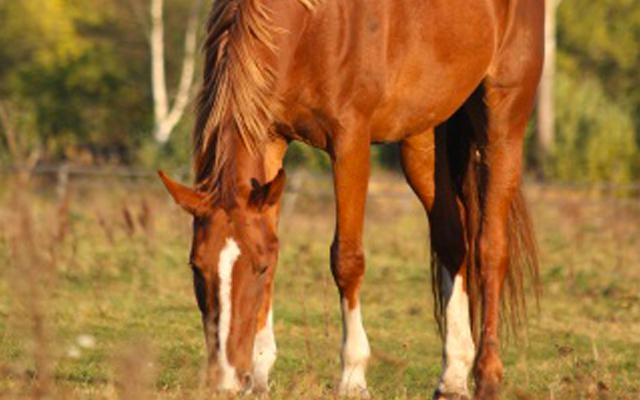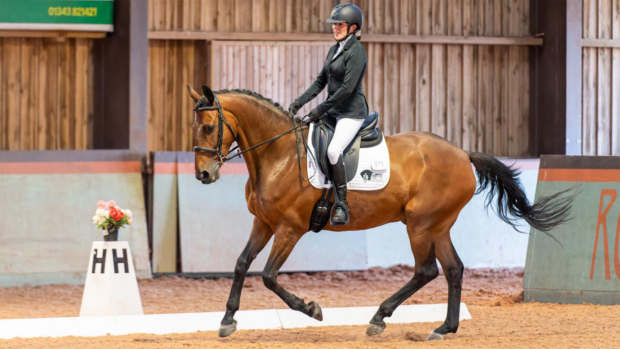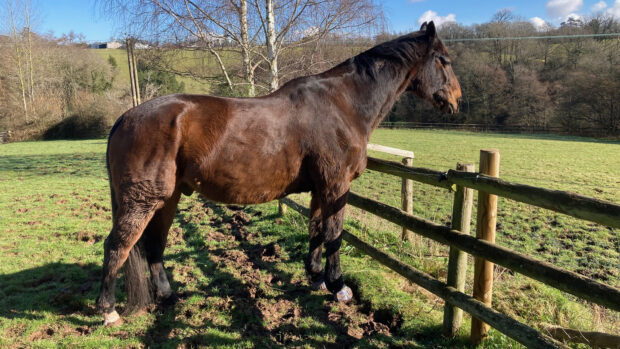Promotional Feature
Leading insurer Petplan Equine has revealed the top five conditions it received claims for in 2016. Gastric ulcers was the number three health problem, so here we take a look at what it is, how it affects your horse and how to manage it.
What are gastric ulcers?
Gastric ulcers are generally small erosions in the lining of the stomach which are painful and can affect the appetite, appearance and demeanour as well as the riding experience of your horse. Gastric ulcers are a common problem among racehorses and elite competition horses, although horses of all ages and types can suffer from them, particularly the horse’s access to forage is limited. Foals are also susceptible. Ulcers occur in the horse’s stomach when the digestive acids come in contact with the sensitive upper part of the stomach lining.
In a natural environment, the horse will graze for up to 16 hours a day. Forage passing through the stomach — as well as bicarbonate in the saliva produced as the horse chews — reduces the acidity. If stabled horses have access to ad-lib hay, haylage or grass, this natural preventative process continues. However, if they are fed high-concentrate diets with only limited access to forage, the acidity in the stomach increases.
Any period without forage intake, whether due to management or illness, leads to increased gastric acidity and the risk of ulcers. Training including fast work increases the risk of the acid splashing around, resulting in damage to the upper part of the stomach. Stress can also be a factor.

Gastric ulcers are generally small erosions in the lining of the stomach which are painful and can affect the appetite, appearance and demeanour — as well as behaviour under saddle
What are the clinical signs?
These are many and varied. Painful areas in the lining of the stomach mean:
- Your horse’s appetite may be reduced or inconsistent and he may prefer hard feed to hay as the long fibre can traumatise the ulcers and cause pain
- Constant pain in the stomach can cause low grumbling colic, especially after eating
- The coat can become dull
- The horse’s temperament can change and he can become subdued and tetchy
- Ridden exercise can cause the stomach acid to splash onto the ulcers causing pain — this can be misinterpreted as a lameness, naughtiness or back pain
To confirm that ulcers are present and what grade (the system used to evaluate their severity) they are, a vet uses a video or fibre-optic camera to look at the horse’s stomach lining, a procedure called a gastric endoscopy, or gastro-scope.

If horses are fed high-concentrate diets with only limited access to forage, the acidity in the stomach increases
What can I do if my horse is suffering?
Diagnosis of gastric ulceration is made by your vet performing a gastro-scope. A small camera is passed down the food pipe to look at the stomach lining. Management and feeding adjustments should be made as your vet advises and your horse will be put on a daily dose of Omeprazole, an excellent treatment that can lead to a full resolution of the ulcers within four weeks.
How can I help prevent gastric ulcers?
Gastric ulcers are most commonly associated with psychological stress, so minimising it offers the best assurance your horse will not develop them. Make sure your horse does not spend long periods without food, that he is turned out daily and, if on shared grazing, that he gets along with the others in the field. His exercise regime should be measured and consistent, and any changes to management or exercise should be phased in gradually. Feeding a high proportion of the diet as forage also ensures the acid in the stomach is buffered. Feeding excessive quantities of hard feed predisposes the horse to high acid levels and risks damage to the stomach lining.
Horse insurance can help cover unexpected veterinary costs, so make sure any horses in your care are covered.
Petplan Equine paid out over £730,000 in claims for gastric ulcers in 2016
For further information go to www.petplanequine.co.uk, or click here for more advice on Petplan Equine’s top five claimed-for conditions.
Petplan Equine’s top five most commonly occurring claims in 2016 were:
1) Arthritis
2) Colic
3) Gastric ulcers
4) Laminitis
5) Desmitis (inflamed ligaments)




